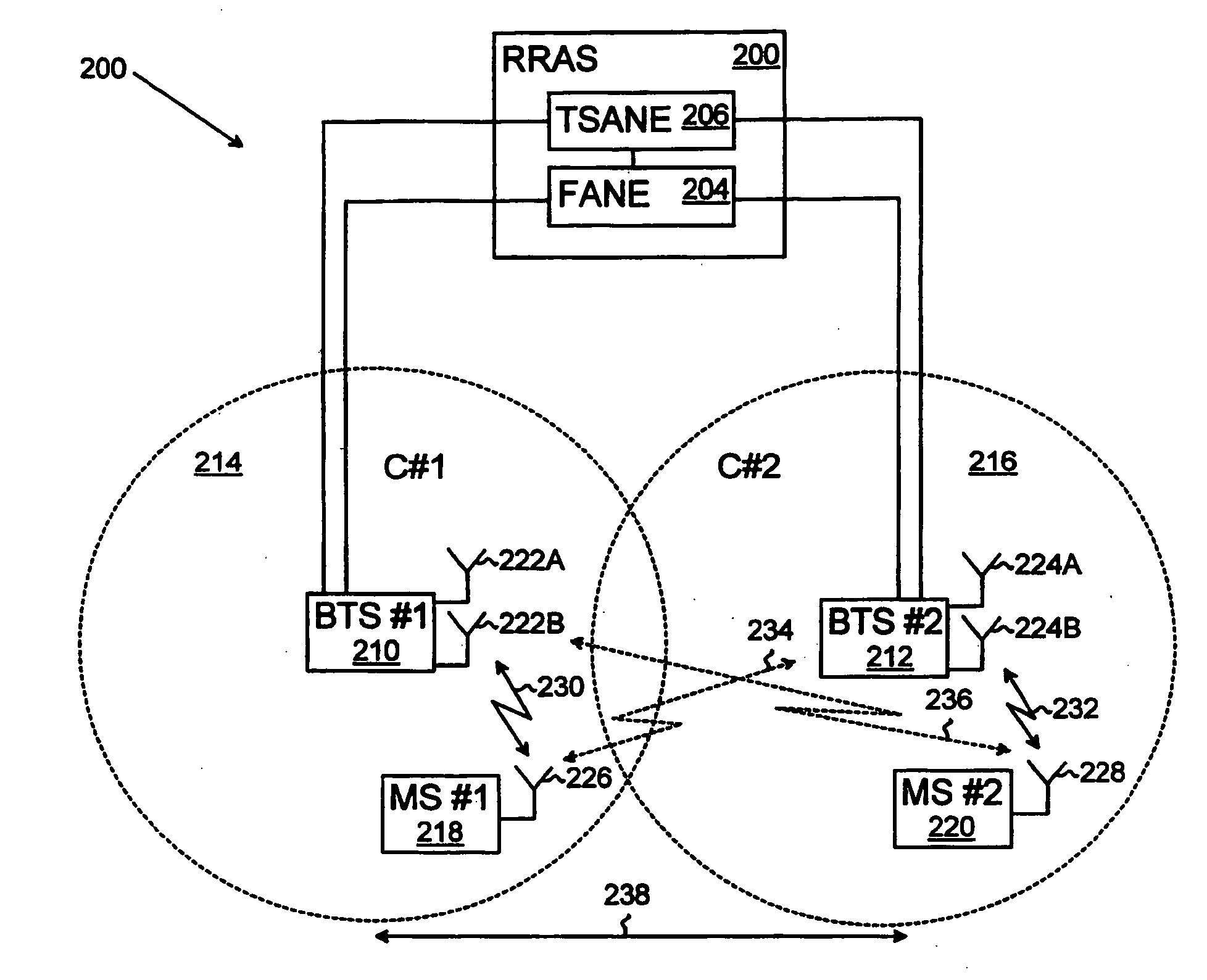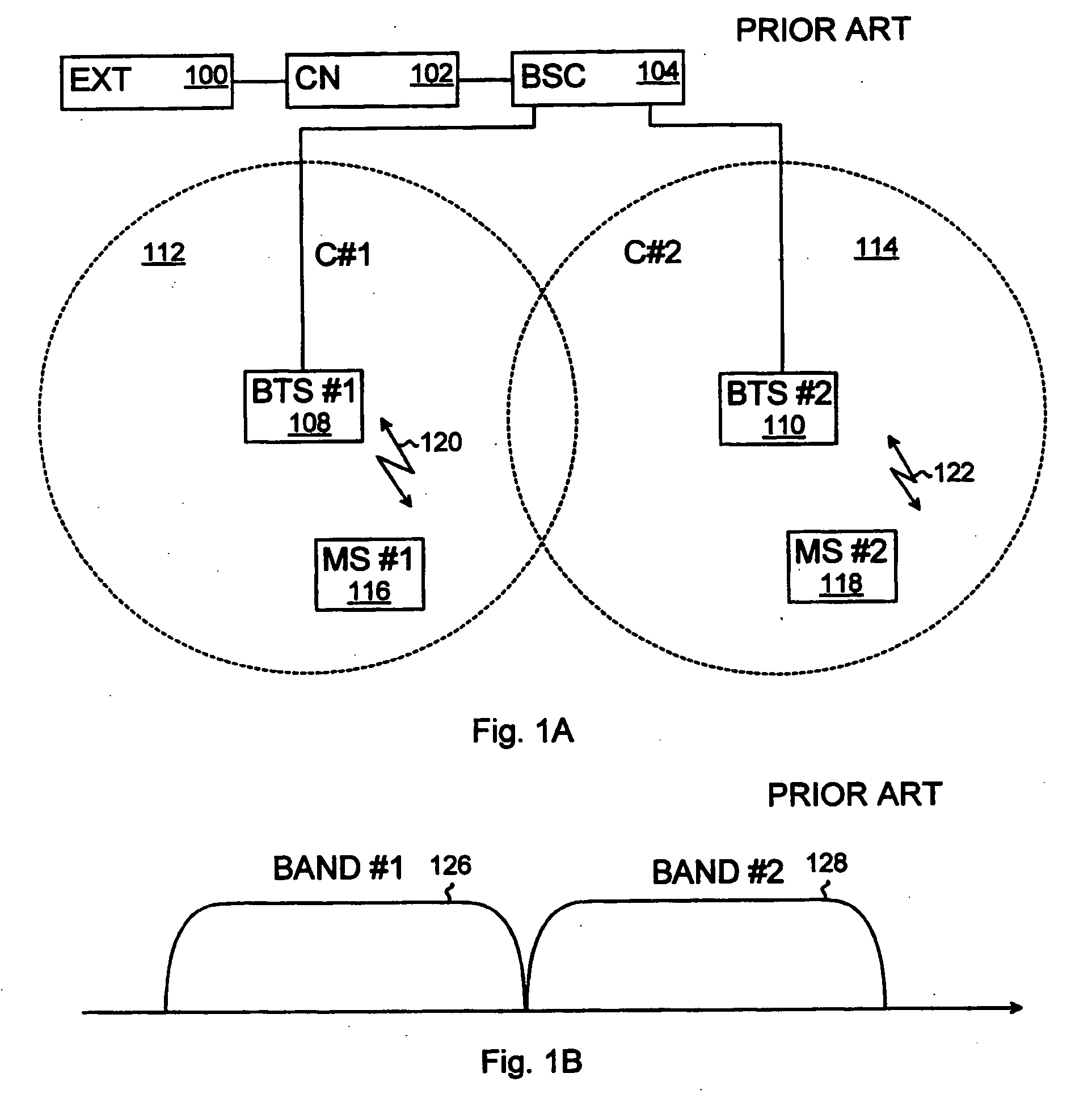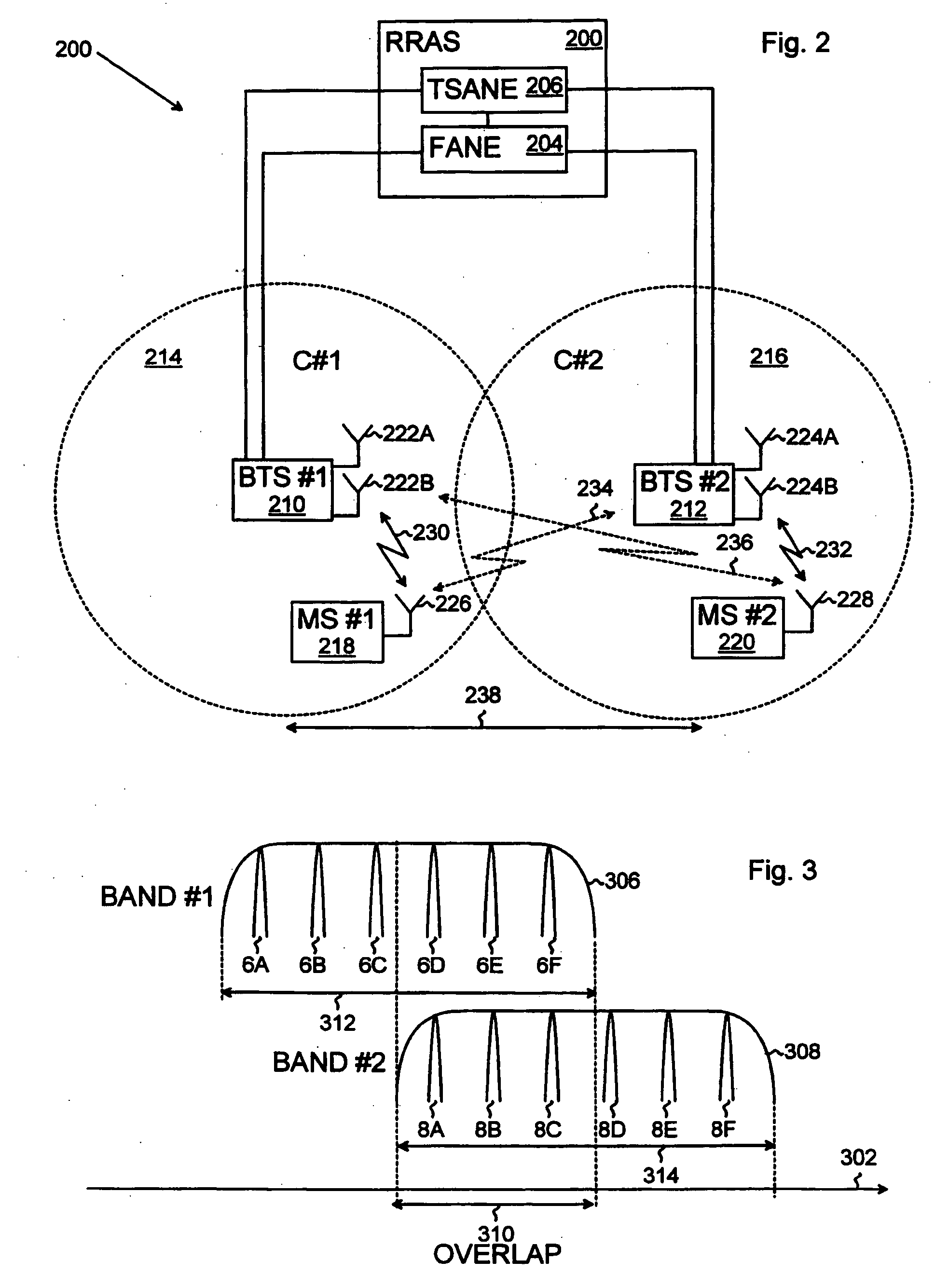Method, system, and computer program for allocating radio resources in TDMA cellular telecommunications system
a technology of cellular telecommunications and radio resources, applied in the field of method, system and computer program for allocating radio resources in tdma cellular telecommunications system, can solve problems such as complicated frequency planning, and achieve the effects of increasing the maximum capacity, increasing the cost-efficiency of infrastructure use, and increasing the coverage of base transceiver stations
- Summary
- Abstract
- Description
- Claims
- Application Information
AI Technical Summary
Benefits of technology
Problems solved by technology
Method used
Image
Examples
Embodiment Construction
[0020] With reference to FIG. 1A, an example of the structure of a TDMA (Time Division Multiple Access) cellular telecommunications system is shown.
[0021] The TDMA cellular telecommunications system may include, for example, a GSM (Global System for Mobile Communications) system, a GSM / EDGE (GSM / Enhanced Data Rates for Global Evolution) system, a GPRS (General Packet Radio Service) system, an E-GPRS (EDGE GPRS) system, or a US-TDMA (US Time Division Multiple Access) system. For the ease of discussion, preferred embodiments of the invention will be described in terms of the GSM system without limiting the scope of the invention to the GSM system, as will be obvious to one skilled in the art.
[0022] The TDMA cellular telecommunications system according to the example includes a core network (CN) 102, a base station controller (BSC) 104, external networks (EXT) 100 connected to the core network 102, base transceiver stations (BTS#1, BTS#2) 108, 110, and mobile stations (MS#1, MS#2) 11...
PUM
 Login to View More
Login to View More Abstract
Description
Claims
Application Information
 Login to View More
Login to View More - R&D
- Intellectual Property
- Life Sciences
- Materials
- Tech Scout
- Unparalleled Data Quality
- Higher Quality Content
- 60% Fewer Hallucinations
Browse by: Latest US Patents, China's latest patents, Technical Efficacy Thesaurus, Application Domain, Technology Topic, Popular Technical Reports.
© 2025 PatSnap. All rights reserved.Legal|Privacy policy|Modern Slavery Act Transparency Statement|Sitemap|About US| Contact US: help@patsnap.com



